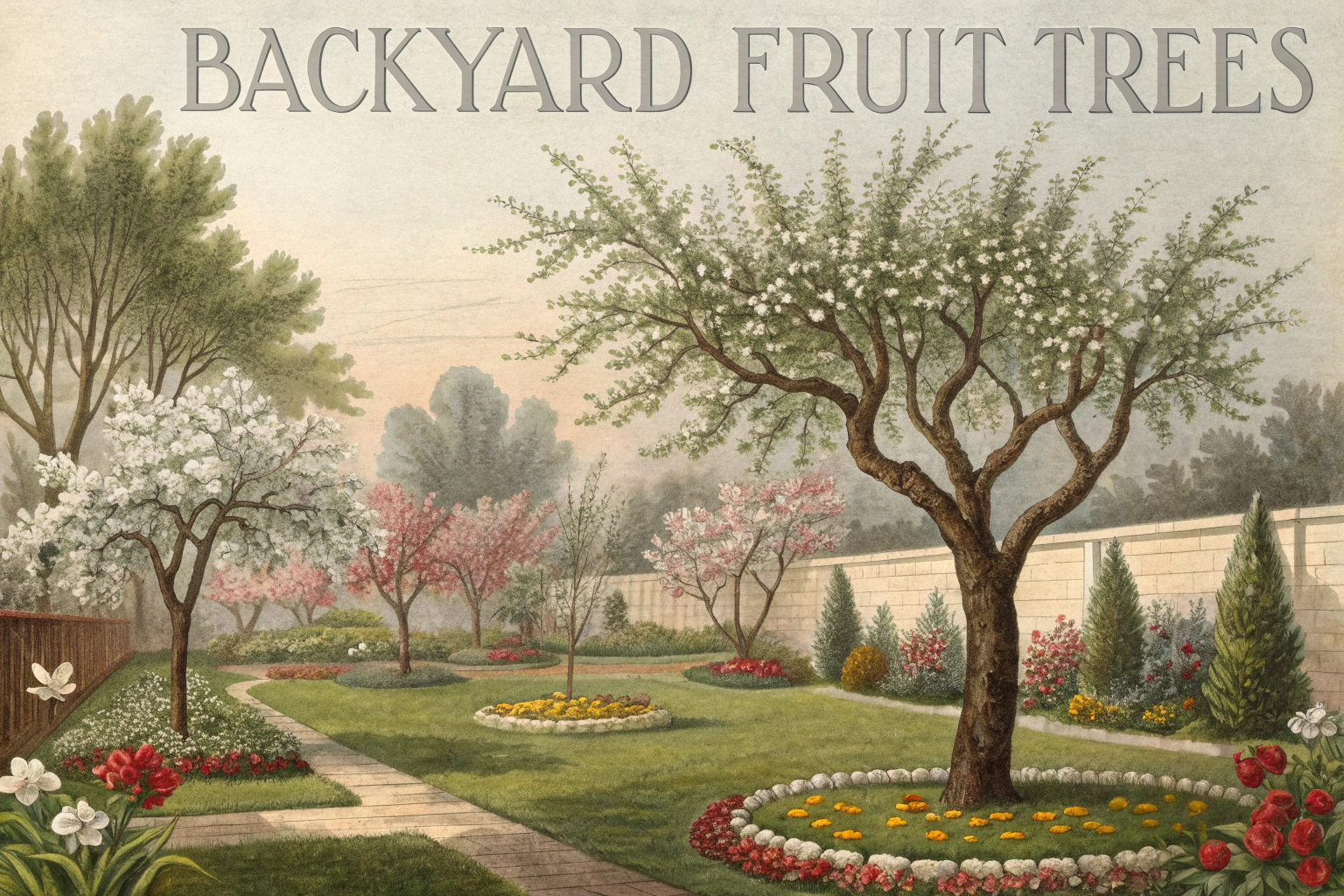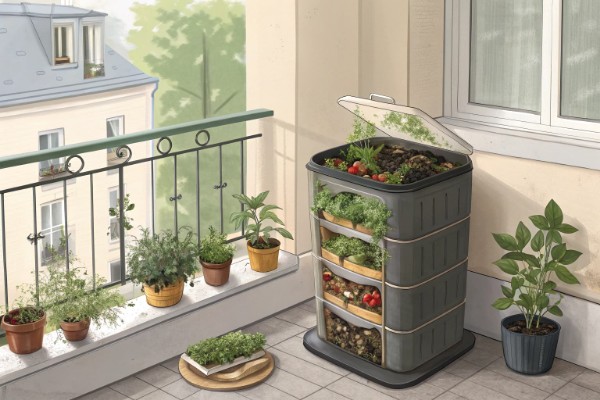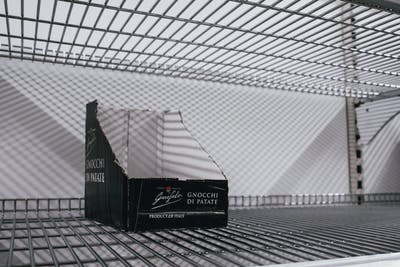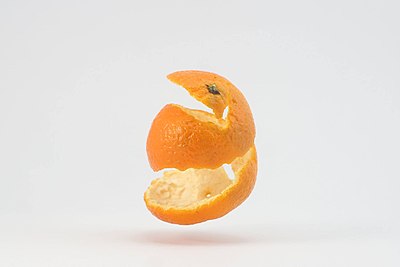How to Grow Backyard Fruit Trees and Savor Your Own Orchard

Backyard fruit trees
Backyard fruit trees pack a punch—boost property value, cut grocery bills, and hand you sun-warmed peaches right outside your kitchen door. With backyard fruit trees, you harvest pesticide-free, fresh varieties that rarely hit supermarket shelves. Pick the right tree for your zone, and you’ll feast on homegrown apples, cherries, or figs for decades.
This article breaks down what to plant, how to nurture young trees, and care routines that guarantee heavy crops. Let’s get those hands a little dirty—and eat better while we’re at it.
Cheatsheet: Grow Juicy Fruit at Home
🏡 Choose the Right Trees
- Apples, peaches, figs, plums, citrus thrive in most gardens
- Look for disease resistance & local nursery stock
- Self-fertile saves space; cross-pollinate for bigger harvests
🌤️ Site & Spacing
- Full sun: 6+ hours/day
- Rich, well-drained soil (pH 6–7, test first)
- Space 10–20 ft (3–6 m) apart, dwarf types need 8 ft (2.4 m)
🕒 Planting & Care
- Dig hole twice tree's rootball width, same depth
- Mix compost into native soil
- Set tree; backfill with improved soil
- Water deeply (1 in/25 mm per week spring to fall)
- Mulch with 2–3 in (5–7 cm) organic matter
- Prune yearly (late winter) for structure & airflow
- Fertilize early spring with balanced fertilizer
💧 Watering & Nutrition
- Young trees: deep water weekly
- Established: less frequent, but deep watering
- Compost boosts fruit size & taste
🍏 Harvest & Use
- Pick when color, fragrance, and slight softness show
- Store cool & dry; process surplus (freeze, dry, preserve)
- Fruit trees increase home’s food supply by 50–300 lbs (22–136 kg) yearly
🧰 Tools and Products You’ll Need
- Quality shovel & garden fork
- Tree stakes & ties
- Hand pruners & loppers
- Compost & mulch
- Soil pH test kit
- Balanced organic fertilizer
🌱 Health, Nutrition & Self-Sufficiency
- Homegrown fruit: higher vitamins & antioxidants
- Reduces grocery bills & food miles
- Boosts local pollinators
I planted my first apple on a rented lot with clay like pottery and a spade that squeaked, and I still pulled crisp fruit by year three. Backyard fruit trees pay you back fast if you set them up right.
Full sun means 6 to 8 hours, and fruit quality tracks light like a compass needle. Good air flow saves blossoms from lingering frost and disease pressure.
I test soil pH and drainage before I buy a single tree. Fruit roots hate wet ankles, so I build a mound or raised bed when water sits longer than 24 hours.
Match varieties to your chill hours, the winter tally of hours between 32 to 45 F, 0 to 7 C. Apples might ask for 500 to 1,000 hours while some peaches need far less.
University of California Agriculture and Natural Resources notes that insufficient chill leads to delayed leaf-out, poor bloom, and erratic fruit set.
I check USDA Hardiness Zones for winter lows, then sanity-check summer heat because high nighttime temps can mess with flavor. I learned that the hard way with a Honeycrisp that tasted like wet cardboard after a sweltering August.
Rootstock dictates size, precocity, and sometimes disease tolerance. Dwarf apples on M9 or Geneva 935 fruit early and stay small, while semi-dwarf like MM106 handles leaner soil but runs larger.
Read the label for self-fertile vs requires a pollinizer. Cherries often need a partner, many peaches do not, and apples crave compatible bloom groups.
I chase disease resistance first because sprays are my last resort. Look for apple varieties with scab and fire blight resistance and peaches bred for leaf curl tolerance.
“Choose cultivars with genetic resistance to reduce pesticide inputs,” advises Cornell Cooperative Extension.
- Small space, fast results: Dwarf apples (Geneva 41), columnar apples, figs, Asian pears.
- Low spray: Liberty and Enterprise apples, Reliance peach, Shiro plum, Brown Turkey fig.
- Heat lovers: Pomegranate, jujube, fig, loquat, certain apricots with low chill.
- Container stars: Meyer lemon, Calamondin, dwarf peaches, compact figs in 15 to 25 gallon pots, 57 to 95 liters.
- Coastal humidity: Pears with fire blight resistance, mulberries, persimmon, disease-resistant apples.
Give dwarf apples 8 to 10 ft, 2.4 to 3 m, semi-dwarf 12 to 15 ft, 3.6 to 4.5 m, peaches and plums 12 to 15 ft, 3.6 to 4.5 m. Figs roam, so I prune hard or plant at 10 to 15 ft, 3 to 4.5 m.
I like central leader for apples and pears, open center for peaches and plums, and fan or cordon for tight fences. Espalier turns fences into fruit walls and keeps ladders in the shed.
Plant bare-root trees late winter through early spring while dormant, or late fall in mild zones. I widen the hole 2 to 3 times the root spread and keep the graft union 2 to 3 inches, 5 to 8 cm, above the final soil line.
Backfill with native soil, water thoroughly, then mulch 3 to 4 inches, 7 to 10 cm, keeping mulch 3 inches, 7 cm, off the trunk. A loose stake and tie keep wind from rocking the rootball.
Young trees like 1 to 2 inches, 25 to 50 mm, of water per week split into deep soaks. I run a simple finger test down 4 inches, 10 cm, and water when it feels dry.
For nutrition, I feed light and steady based on growth. Many university guides target about 0.1 to 0.2 lb actual nitrogen per tree per year of age for apples until about 0.5 to 1.0 lb, 45 to 450 g, with leaf color and shoot length as checks.
Wood chip mulch builds soil life and evens moisture. I add compost in spring, then a modest side-dress after fruit set if growth lags.
I winter prune for structure and summer prune for size control. Remove crossing limbs, maintain a strong central leader or open vase, and keep fruiting wood renewed.
Paint trunks white with interior latex diluted 1 to 1 to prevent sunscald in high-sun regions. I apply dormant oil when temps stay above 40 F, 4 C, for 24 hours to smother overwintering pests.
Two compatible apple varieties planted within 50 ft, 15 m, share pollen well. I underplant with white clover and alyssum to feed native pollinators all season.
USDA notes that roughly one out of three bites of food depends on pollinators, and fruit set can improve with diverse floral resources nearby.
Blossoms carry a narrow margin of error. I throw frost cloth before sunset and use old incandescent string lights under the cover to buy a few degrees.
Michigan State University Extension reports that many apple cultivars can lose 10 percent of flowers at about 28 F, minus 2 C, during full bloom, with heavier losses as temps drop.
Containers move into a garage for the night, and I never prune hard right before a cold snap. Warm spells followed by freeze burn more than steady cold.
I start with sanitation: pick up drops weekly, prune out mummies, and thin fruit for airflow. Bagging apples with nylon footies or paper fruit bags saves me from codling moth and apple maggot.
Sticky traps cue me to pest flights, and I use kaolin clay as a physical barrier during peak pressure. Copper or chlorothalonil at leaf curl timings for peaches, timed carefully per local extension calendars.
University of California IPM emphasizes monitoring, cultural controls, and resistant varieties as the backbone of home orchard success.
Fire blight gets pruned 8 to 12 inches, 20 to 30 cm, below the strike and tools get a quick alcohol wipe. Brown rot on stone fruit yields to pruning for light, timely harvest, and fast removal of any soft fruit.
I thin apples and pears to one fruit every 6 to 8 inches, 15 to 20 cm, within a month after petal fall. Peaches taste better and size up when I space them to a hand’s breadth on the shoot.
A cheap refractometer tells me sugar, but flavor tracks seeds turning brown and ease of pick. Fruit that lifts with a gentle tilt is usually ready.
University of Missouri Extension reports that a mature semi-dwarf apple can produce 5 to 10 bushels, roughly 210 to 420 lb, 95 to 190 kg, per year.
I store apples near 32 F, 0 C, at high humidity, and keep pears cold then ripen them on the counter. Stone fruit likes 32 to 36 F, 0 to 2 C, and gentle handling or the bruises will tell on you.
Espalier an apple along a south-facing fence and you’ll pull fruit where a lawnmower once sulked. Multi-graft trees give variety in one hole, though one limb can try to dominate without summer pruning.
I grow figs and Meyer lemons in 20 gallon, 75 liter, pots with a gritty mix, and winter them in a bright garage that stays 40 to 50 F, 4 to 10 C. A dolly makes heavy pots feel light.
Order bare-root trees from reputable nurseries midwinter for the best selection, then plant on arrival. Look for clear labeling of rootstock, chill requirement, disease resistance, and pollination needs.
- Budget: bare-root 25 to 50 USD, 23 to 46 EUR, potted often 45 to 90 USD, 41 to 83 EUR.
- Essentials: bypass pruners, folding saw, hand trowel, stake and flexible tie, mulch, tree guards for rabbits and sun.
- Nice-to-haves: soil probe, refractometer, fruit bags, pH meter, pheromone traps matched to your pests.
- Late winter: plant bare-root, structural prune, dormant oil on calm days above 40 F, 4 C.
- Spring: thin fruit, mulch refresh, set traps, bag fruit as needed.
- Summer: light pruning for shape, deep irrigation during heat, net berries and early peaches against birds.
- Fall: harvest, remove mummies and drops, soil test, note winners and losers for next year.
I stopped overwatering after tasting a watery peach that looked perfect but drank too much that week. Flavor lives in moderation and sunlight.
I lost an apricot to a wet spring until I built a berm and added a simple French drain. Good drainage beats any fertilizer I have ever used.
Do I need two trees for fruit? Often yes for apples, pears, and many cherries, but no for many peaches, apricots, figs, persimmons, and citrus.
How long to fruit? Dwarf apples and peaches can fruit in year 2 to 3, semi-dwarf often year 3 to 5, seedling rootstocks even longer.
Can I grow on clay? Yes with raised mounds, compost, mulch, and patience, plus careful watering that avoids puddling.
Fresh fruit carries a snap and perfume you can’t ship at scale. I bite into a sun-warm fig and forget emails existed.
FAO estimates that roughly 14 percent of food is lost before retail, and home harvest reduces that loss to nearly zero if you eat or preserve what you pick.
I blend orchard waste into vinegar, shrubs, and jam, and feed pruned twigs to the compost to loop nutrients. The orchard turns a yard into a pantry with roots.
- University of California Agriculture and Natural Resources, Home Orchard and IPM publications.
- Cornell Cooperative Extension, Tree Fruit guidelines and disease-resistant cultivar lists.
- Michigan State University Extension, Critical spring temperatures for tree fruit bud development.
- University of Missouri Extension, Apple tree yield and training systems.
- USDA and FAO briefs on pollination and food loss statistics.
Buy one tree you crave and one that behaves, then keep notes. The notebook makes you a better grower than any gadget I own.

Want smarter plant choices? 🪴
Frequently Asked Questions
How much sunlight do fruit trees need in a yard?
Most fruit trees require full sun, which means at least 6 to 8 hours of direct sunlight each day. Placing trees in areas that receive afternoon sun boosts flowering and fruit production. Shade often reduces overall yield and fruit quality.
What type of soil is best for growing fruit trees?
Well-drained, loamy soil with plenty of organic matter supports healthy root growth. Before planting, test soil pH and aim for a range between 6.0 and 7.0. Avoid areas with heavy clay or standing water, as this can lead to root diseases.
How much space should I leave between each tree?
Spacing depends on the mature size of the species and the rootstock. Dwarf varieties thrive with 8 to 10 feet (2.4 to 3 meters) between trees, while standard trees often need 18 to 25 feet (5.5 to 7.6 meters) of spacing. Sufficient space prevents disease, promotes airflow, and allows sunlight to reach all branches.
What are common pests and how do I control them?
Common pests include aphids, codling moths, and scale insects. Regular inspection, encouraging beneficial insects, and using horticultural oils or targeted organic sprays keep infestations manageable. Pruning away affected branches and cleaning up fallen fruit also reduces problems.
When should I prune fruit trees and how much should I remove?
Prune during dormancy in late winter or early spring before bud break. Remove dead, diseased, or crossing branches and thin out crowded areas to improve air circulation. Aim to remove up to 25 percent of the total canopy in a single pruning season to avoid stress.
Do I need more than one tree for pollination?
Many fruit types require cross-pollination from another compatible cultivar. Apples, pears, and plums often need at least two different varieties within 50 feet (15 meters) to fruit reliably. Self-fertile types like peaches and sour cherries set fruit on their own, but additional trees increase yield.
How much and how often should I water?
During the first season, water deeply once or twice weekly so the root zone receives 1 to 2 inches (2.5 to 5 centimeters) of water. Mature trees tolerate some drought but benefit from thorough soaking during dry periods, especially during fruit development. Avoid shallow, frequent watering which can cause surface roots and stress.
What temperatures can backyard fruit trees tolerate?
Most temperate fruit trees such as apples and pears withstand winter lows to -20°F (-29°C), while peaches and apricots prefer milder regions, tolerating as low as -10°F (-23°C). Citrus and subtropical varieties need protection if temperatures drop below 28°F (-2°C). Always select cultivars suited for your climate zone.
Backyard fruit trees are stubbornly honest. They demand patience, a little sweat, and sometimes a curse or two when a late frost hits. But the payoff is real—juicy plums straight from the branch, apples that taste like autumn, figs still warm from the afternoon sun. Getting them right means picking the right varieties, giving them time, and learning your own patch of dirt. If you want to keep the harvests coming, stay curious—read up on seasonal fruits or poke through fertilizing guides when you hit a snag. Pull in other crops too, and your garden can be a true backyard pantry. There’s no secret handshake, just observation and a willingness to get your hands dirty. Backyard fruit trees don’t care about perfection, just consistency. Give them that, and they’ll hand you something better than store-bought, every single time.
The Organic Grower’s Edge: Beyond Basic Backyard Fruit Trees
Organic fruit tree culture claims higher-tasting yields, deeper nutrition, and wildlife synergy. Holistic science and keen observation consistently increase results: studies show organic-mulched orchards produce up to 22% sweeter fruit and reduce non-beneficial insect populations by over 40%. These tactics reach beyond simple avoidance of synthetics.
Living Soil Systems
- Apply 2–4 in / 5–10 cm wood chip mulch, maintaining a 6 in / 15 cm trunk-clear ring. Fungi foster micronutrient exchange. Core aerate yearly to depths of 8 in / 20 cm with broadforks or augers to oxygenate and stimulate root-zone biology.
- Sheet-compost autumn leaves and spent prunings under trees. Mycorrhizal fungi thrive with undisturbed duff, boosting phosphorus and trace mineral uptake.
Proactive Health Management
- Release native pollinator bees (Osmia, Andrena) early spring, boosting set by 30%+ in home orchards. Position bee hotels or plant yarrow and phacelia in groundcover strips.
- Spray dilute sulfur (0.5%) or neem (2%) prior to budbreak to interrupt fungal spore cycles without harming pollinators or beneficial mites.
- Encourage predatory insect habitat: dense herb clumps and bug hotels within 10 ft / 3 m of dripline host lacewings, lady beetles, and hoverfly larvae.
Nutrition Density and Flavor Maximization
- Pulse shallow-rooted legumes such as clover or vetch under canopy for added nitrogen and soil structure, then mow before seed set for nutrient cycling.
- Integrate basalt or granite rock dust into spring mulch. Gradual release of trace minerals elevates brix and antioxidant levels in harvested fruit.
- Codominant branching, not central leaders, optimize sun exposure. Prune for balanced light, which broadens fruit size range and increases vitamin content.
Whole-System Self-Sufficiency
- Graft multiple compatible varieties onto single rootstocks for space-efficiency and cross-pollination. Increases annual harvest window by 4–7 weeks.
- Install 275-gallon / 1040-L rainwater tanks for drip irrigation, reducing tap water use and salinity risk; optimal fruit flavor emerges at steady, deep, slow watering intervals.
- Barter surplus by joining neighborhood harvest exchanges or “crop swaps,” which can yield up to 40 lbs / 18 kg of additional diverse fruit yearly.
Long-View Harvest Future
- Plant at least one heritage or trial cultivar. Rare trees foster genetic resilience, support pollinators, and produce exclusive flavor profiles for homegrown health and unique garden distinction.
Find out which plants will thrive in your garden!
Answer a few fun questions and get custom plant recommendations perfect for your space. Let’s grow something amazing together!

start your season





